
Habitat for Humanity is progressing on their first 3D-printed home in the United States. Overseen by Habitat for Humanity Central Arizona, the single-story home is currently under construction in the city of Tempe, Arizona. The global housing non-profit sees the project as an important step in their future for delivering affordable housing across the country.
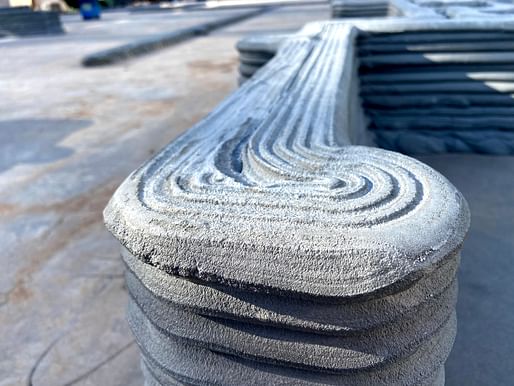
The home is being built using a combination of 3D printing and traditional construction. Between 70-80% of the home will be 3D printed, including the internal and external walls, all using a Build on Demand Printer (BOD 2) shipped from Germany-based PERI Group. The printer works in three dimensions, with an XY axis allowing horizontal construction, and a raising and lowering of the printing frame to allow vertical construction. This gantry principle allows the printer to move into any position within the structure to build inner and outer walls layer-by-layer.
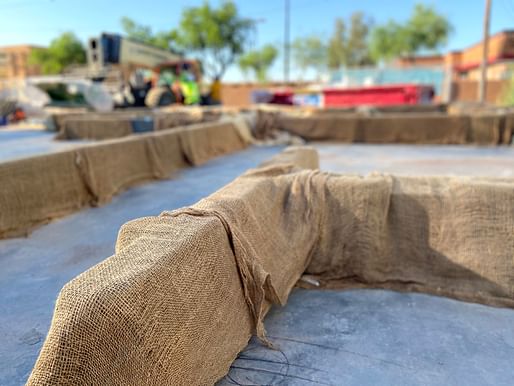
Health and safety measures allow for construction workers to remain in the print area during the process, while a control unit allows workers to operate the printing machine either via a web or touch screen interface. Once the walls are printed, the ceilings can be constructed in a traditional way.
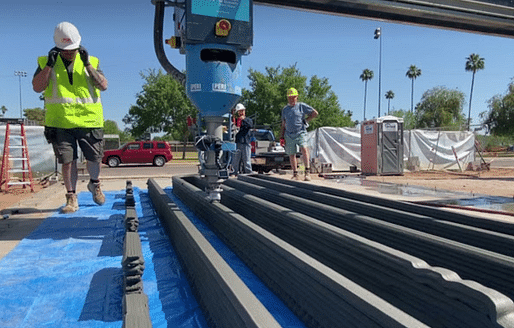
With COVID-19 continuing to cause a shortage in labor, lumber, and other construction materials, the organization see their integration of 3D printing as a valuable mitigation. The reduction in manual labor will also allow construction to continue during Arizona’s hottest season, a time when construction typically slows due to the health risks caused by extreme temperatures.

“While we have found success in building small 3D-printed homes abroad, at 1,700 square feet, this home represents Habitat’s entry into new, innovative space. It is the first of its kind in the U.S. and sets the stage for increased capacity through a solution that could be both sustainable and cost-effective,” said Adrienne Goolsby, senior vice president of U.S. and Canada at Habitat for Humanity International. “We’re proud of Habitat Central Arizona’s research and progress using this new technology, and will continue to assess its potential to be scaled and more widely adopted so that we can further address the critical issue of home affordability in the U.S.”

At 1,738 square feet of livable space, the custom, single-family home will feature three bedrooms and two full bathrooms. The home will be solar ready once construction is completed, with Habitat Central Arizona also pursuing LEED Platinum certification and IBHS FORTIFIED Home designation.
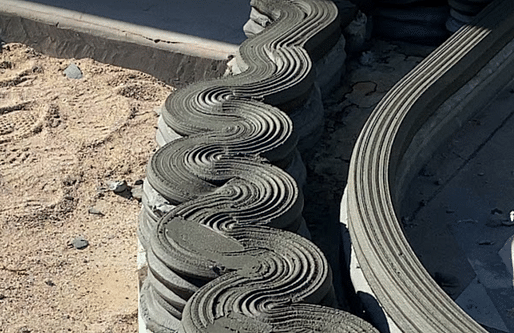
“When we consider the housing issues facing Arizona, the need for affordable homeownership solutions is clear,” said Jason Barlow, president and CEO of Habitat Central Arizona. “If we can deliver decent, affordable, more energy-efficient homes at less cost, in less time and with less waste, we think this can be a real game-changer.”
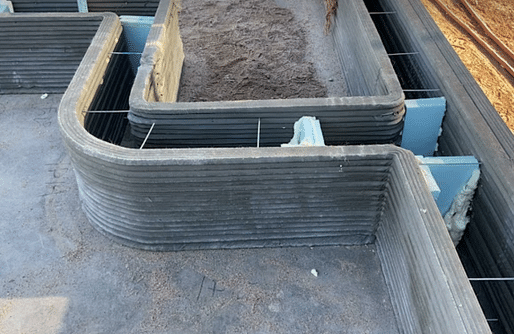
The home began construction in May 2021, with an expected completion and occupancy date in October 2021.
25 Comments
Is there any further information on the actual wall assembly of this house?
I see images of precast sections, and videos of cast-in-place walls, and something that looks like sandwich panels waiting for an insulation infull, and a weird but cool decorative squiggly bit. How will this house actually be constructed?
Fo
I found a floor plan on Candelaria's site, so that helps. It seems like a cool design, so I'm not slamming the architect for this, but: look at the size of the garage relative to the living space. The US is so messed up.
First world problems
First world habits that create third world problems.
Your garage is large to accommodate putting 2-3 vehicles in to keep them cool and protect them from the sun. When it gets above 100 even the seatbelt will burn you so in the garage they will go. Plus it allows you to go from ac to ac without getting heat stroke on those days.
It would make a possible future addition a slam dunk.
Looks like a house made of play dough...
The Katrina Cottages have this Habitat of Humanity thingy beat by several miles. Don't mind people reinventing the wheel, but they should make it round now and then.
That is a cute house, Volunteer, but I honestly think the extruded house is more aesthetically and climactically appropriate in Arizona than this would be. But that's also why I want to know more about the construction makeup - is it *really* approriate for the desert, or is it a shiny new thing?
Donna, I am sure Marianne Cusato, the original architect of the Katrina Cottage, could come up with a southwestern desert modern version that would appeal to most everyone. When I was in Phoenix years ago they were building high-end 'adobe' houses with fake adobe over traditional construction. Also, I have no idea what the advantage of all this Habitat for Humanity concrete is over a standard cmu construction.
Suddenly co2 from concrete isn't important ...
As for labor shortages ... companies found ways to be more profitable with less labor. Habitat should be going in the other direction - employing people at good wages to build. That's the "Humanity" part.
We agree on some things. Rammed earth construction would not only be far more sustainable for that particular climate, and more thermal mass, but will require man power…which last time I checked ATP is still far more efficient than any mechanical fuel system.
It is a non-profit. Houses are built by volunteers and no money is made on the sale of the houses.
Is Brad Pitt involved? Has he gone from 'Make it Right' to 'Make it Weird'?
I can see this being actually useful in AZ, nobody can stand outside from March to October, just set up the machine and wait for the remote controled concrete truck to feed the remote controled concrete pump and start the remote controled 3d printer - would be a pain if the nozzles have to be cleaned every day, unless you could run water from the remote controled hose.
the plot seems something like: automate the masses out of their jobs, sell “socialism” (government gives spending money to the masses), the masses spend that money in an ever shrinking number of corporate conglomerates, the rich get richer…the masses become a permanent consumer class…a powerless vector for the upward distribution of wealth…a perfect circle for the oligarchs.
Covid proves that is exactly how it will work. “Woke capitalism” IS the sheep’s clothing. Don’t fall for it. Automation will doom us all.
Here is one of Bill Levitt's homes that he built on Long Island in 1948. He was building houses at a rate of 30 a day. The cost was about $8,000 then which is about $90,000 today. This unit is for sale for $569,000.
The housing crisis in America is a political problem, not an architectural one, and certainly not a technological one. New architecture + technology is never going to fix the crisis because it's a solution to the wrong problem.
Yeah, but think of all the money to be made not addressing the problem.
What’s the political solution?
There is rarely a "the" solution. You're not thinking in systems.
To actually address the question, though, it's a combination of things.
First, you need to figure out how to reduce the over-regulatory / over-litigious environment in places where people most want to live without disenfranchising the people who already live there (a la Robert Moses). Restrictive zoning is a problem, but there's also the problem of over-represented voices as an unintended consequence of neighborhood engagement. You need to allow more stuff to be built by right without jumping through so many hoops of design review and community comment, but at the same time manage development in a way that reduces displacement and dis-incentivizes congolmoration & corporate rent seeking (a la Blackrock, et al). So, tricky balance there.
Separately, you need to balance profit-motivated private development with non-profit public housing to 1) keep market rate rents reasonable, 2) keep the development world in business, and 3) create safe places to live for people who fall through the bottom of what the market can provide.
I had an idea not too long ago about counter-cyclical public development. In essence, using government funding to keep architects and builders afloat during market recessions, with the end product being publicly subsidized housing. Kind of a WPA for the development industry. Again it's not *the* solution, but it might be part of a complete breakfast.
And all that's before you zoom out past the individual property level... next you've got infrastructure, building maintenance, access to transit, air quality. These all play into housing affordability (and sustainability, if you want to include that also) and none of them are anywhere near the Architects' day-to-day. These are all policy level discussions.
It's a difficult thread to pull, because soon you start to realize how closely everything touches housing economics and how much housing economics influence our physical and cultural environment.
I realize these aren't really solutions, I'm just trying to shine a light on the actual problem(s). Just spitballing after a few Friday beers though, I'm no expert.
The live links that link to marginally related topic landing pages are annoying, Archinect. Especially when there's no link to either of the Habitat sites.
Or the site of, you know, the Architect?
Thank you SneakyPete.
Block this user
Are you sure you want to block this user and hide all related comments throughout the site?
Archinect
This is your first comment on Archinect. Your comment will be visible once approved.